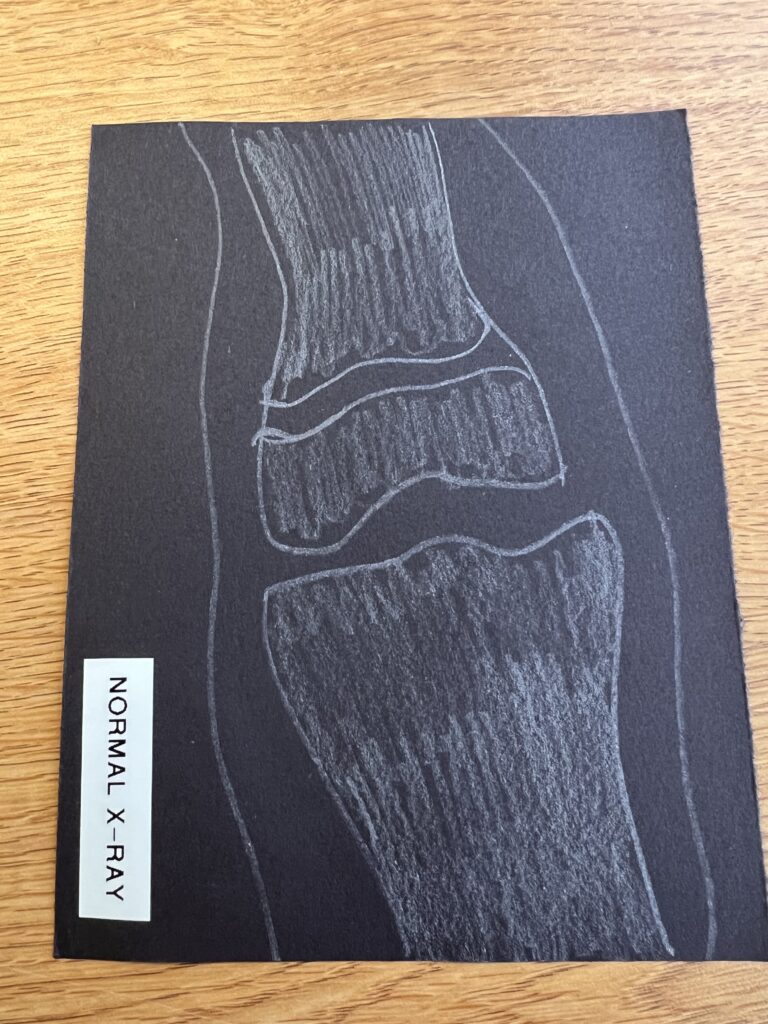
Above an example of what the development of an osteosarcoma tumor looks like, which usually occurs at the distal end of the femur around the epiphyseal plate in young adults. Often during a growth spurt. As there was no indication to which cell specifically the cancer developed it is possibly the contribution of several different factors in the process of bone formation.


Your project is quite interesting. I appreciate you choosing this topic for your project. Cancer of any type is always scary. They all seem to have various treatments, but they all seem to be aggressive on one’s immune system. Your caulk design is ingenious to show the contrast of bones an x-ray. Your drawing would be helpful in a patient handout. Bone cancer, particularly when it occurs in young adults always seem so surreal since we generally associate bones issues and cancer with the eventual higher possibility in an older age or due to a less healthy lifestyle. It is definitely difficult to understand why a young adult would develop a bone tumor during a growth spurt. Does this mean that it could happen to any young child with a growth spurt? Or only to those who have predisposition based on family genetics? Your project makes me want to research the specific factors involved which causes the development of an osteosarcoma tumor. What made you want to research this bone disease? You stated that there was “no indication to which cell specifically the cancer developed”. Is anyone at risk to develop this? Is it a higher risk to someone if it was diagnosed in another family member? Is there anything to prevent osteosarcoma? How is it treated? Are there non-surgical treatments or only surgical treatments? Is radiation or chemotherapy a requirement to fight osteosarcoma? What bones are more susceptible to developing this bone disease? Thank you for your contribution to our class STEAM project.